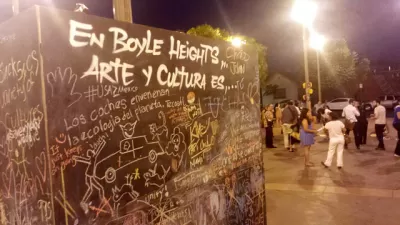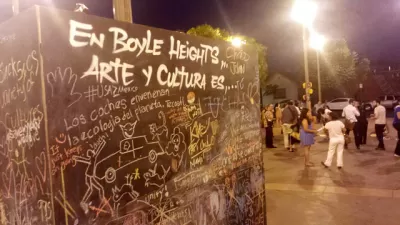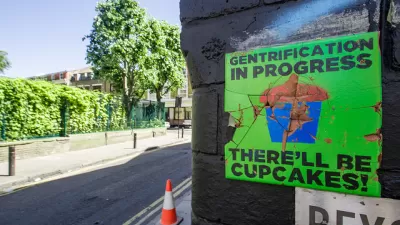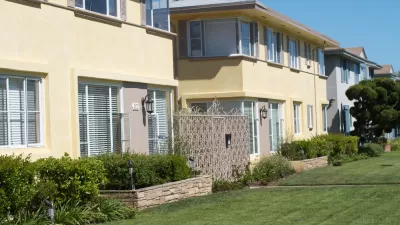The historically Latino working class neighborhood is a frequent touchstone in debates over gentrification in Los Angeles. That history goes back decades and colors residents' perceptions.

Alfredo Huante unpacks Boyle Heights' long and fraught relationship with L.A. city planning, a story that goes back to the 1960s. The memory of invasive urban renewal, he writes, lingers on despite the fact that Boyle Heights escaped the fate of neighboring "blighted" areas with largely Latino populations.
Huante discusses the rise of community planning in L.A. following the Watts Riots, an early effort to address racial disparities in land use decision making. "Although citizen participation in neighborhood planning was readily encouraged in predominantly white, non-blighted neighborhoods, community plans functioned as the first efforts to solicit and collect barrio residents' input in city planning processes."
Despite those moves, a shift of focus to downtown development under Mayor Tom Bradley again sidelined community planning in Boyle Heights, setting the stage for today's acrimonious debates over development and neighborhood heritage.
Through the late 20th century and into the 21st, Haunte writes, "overarching policies of exclusionary land uses prevailed even if political inclusion improved. With downtown redevelopment jumping the L.A. River into Boyle Heights, ongoing discussions and framing over anti-displacement movements are better understood within this history of dispossession."
FULL STORY: Is Boyle Heights “Worth Saving”?

Trump Administration Could Effectively End Housing Voucher Program
Federal officials are eyeing major cuts to the Section 8 program that helps millions of low-income households pay rent.

Planetizen Federal Action Tracker
A weekly monitor of how Trump’s orders and actions are impacting planners and planning in America.

Ken Jennings Launches Transit Web Series
The Jeopardy champ wants you to ride public transit.

Washington Legislature Passes Rent Increase Cap
A bill that caps rent increases at 7 percent plus inflation is headed to the governor’s desk.

From Planning to Action: How LA County Is Rethinking Climate Resilience
Chief Sustainability Officer Rita Kampalath outlines the County’s shift from planning to implementation in its climate resilience efforts, emphasizing cross-departmental coordination, updated recovery strategies, and the need for flexible funding.

New Mexico Aging Department Commits to Helping Seniors Age ‘In Place’ and ‘Autonomously’ in New Draft Plan
As New Mexico’s population of seniors continues to grow, the state’s aging department is proposing expanded initiatives to help seniors maintain their autonomy while also supporting family caregivers.
Urban Design for Planners 1: Software Tools
This six-course series explores essential urban design concepts using open source software and equips planners with the tools they need to participate fully in the urban design process.
Planning for Universal Design
Learn the tools for implementing Universal Design in planning regulations.
Heyer Gruel & Associates PA
Ada County Highway District
Institute for Housing and Urban Development Studies (IHS)
City of Grandview
Harvard GSD Executive Education
Toledo-Lucas County Plan Commissions
Salt Lake City
NYU Wagner Graduate School of Public Service





























